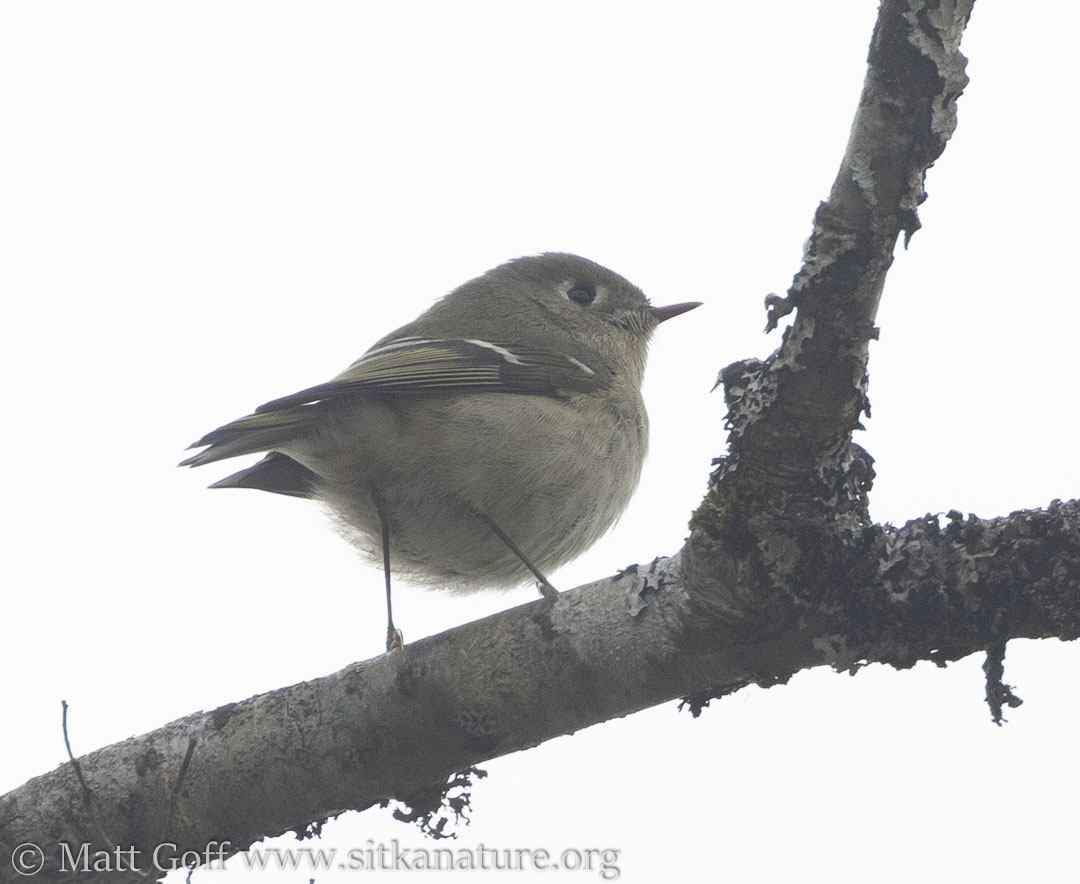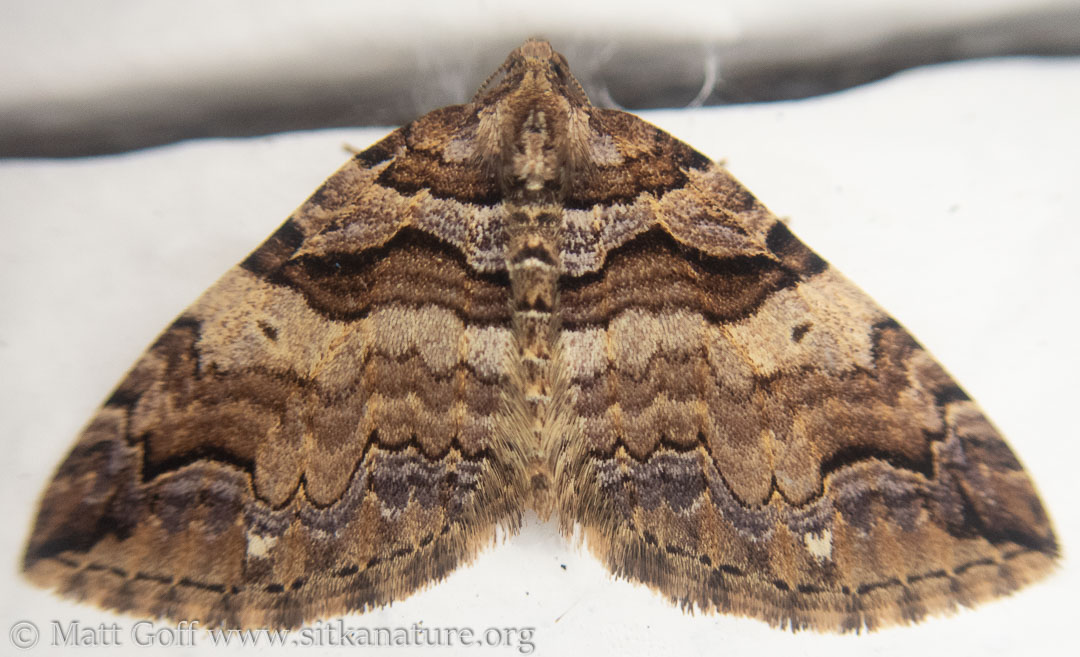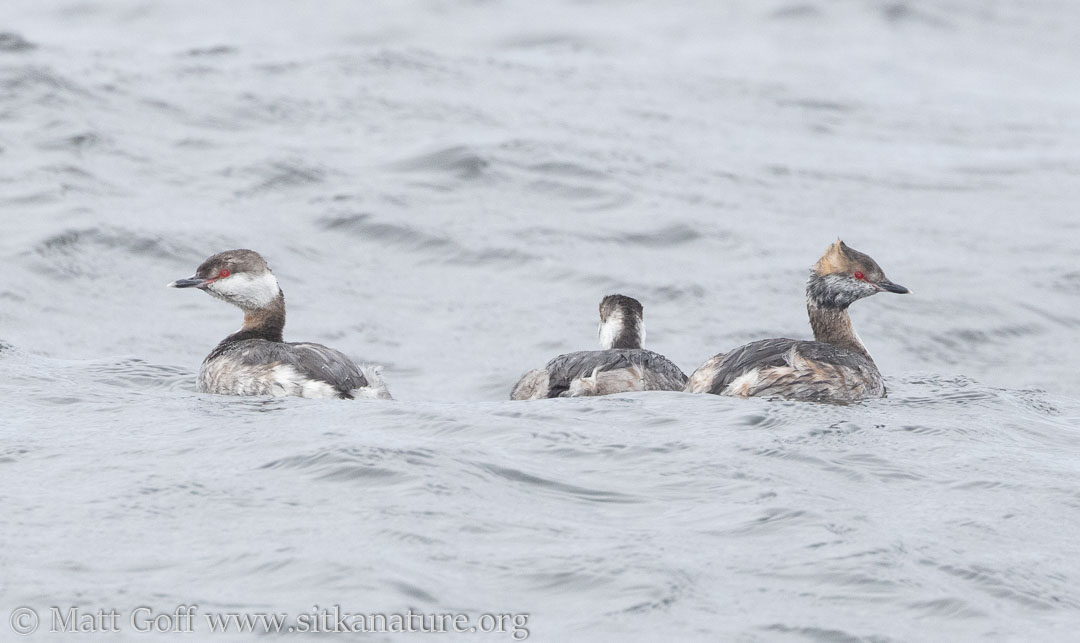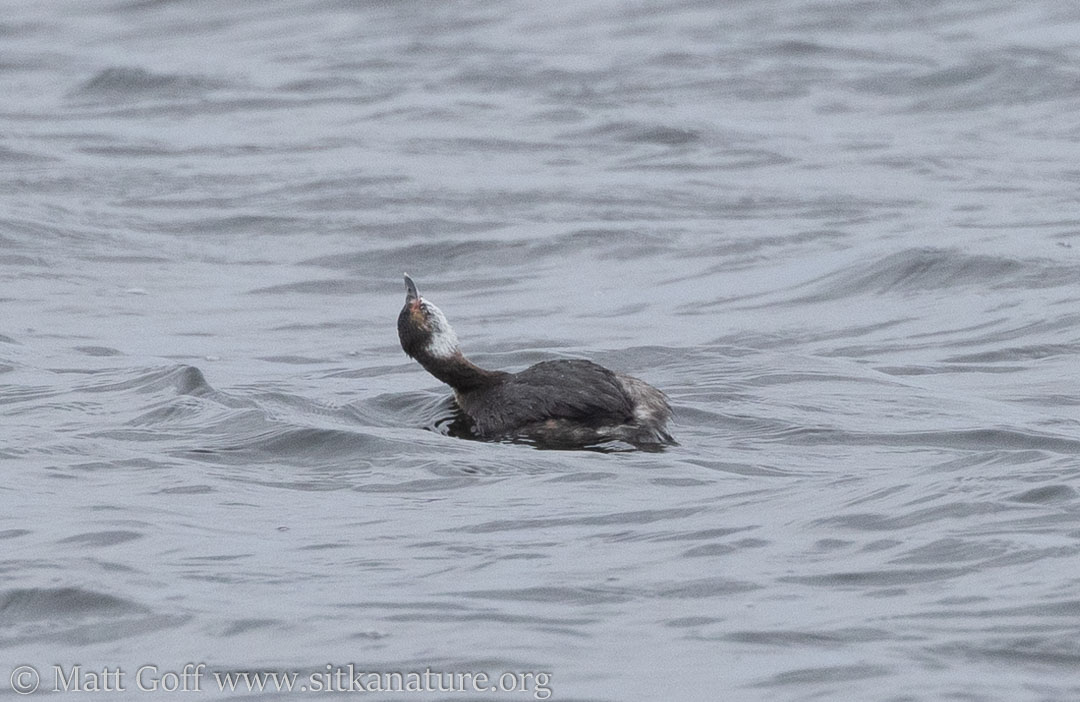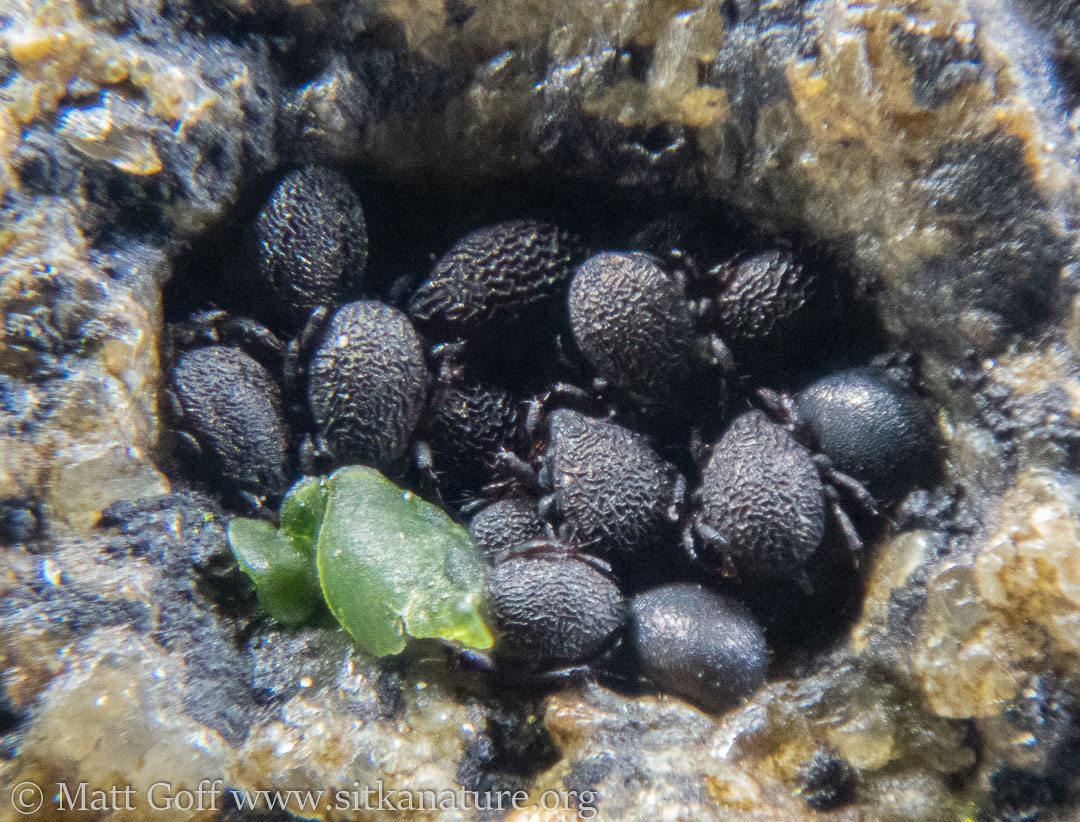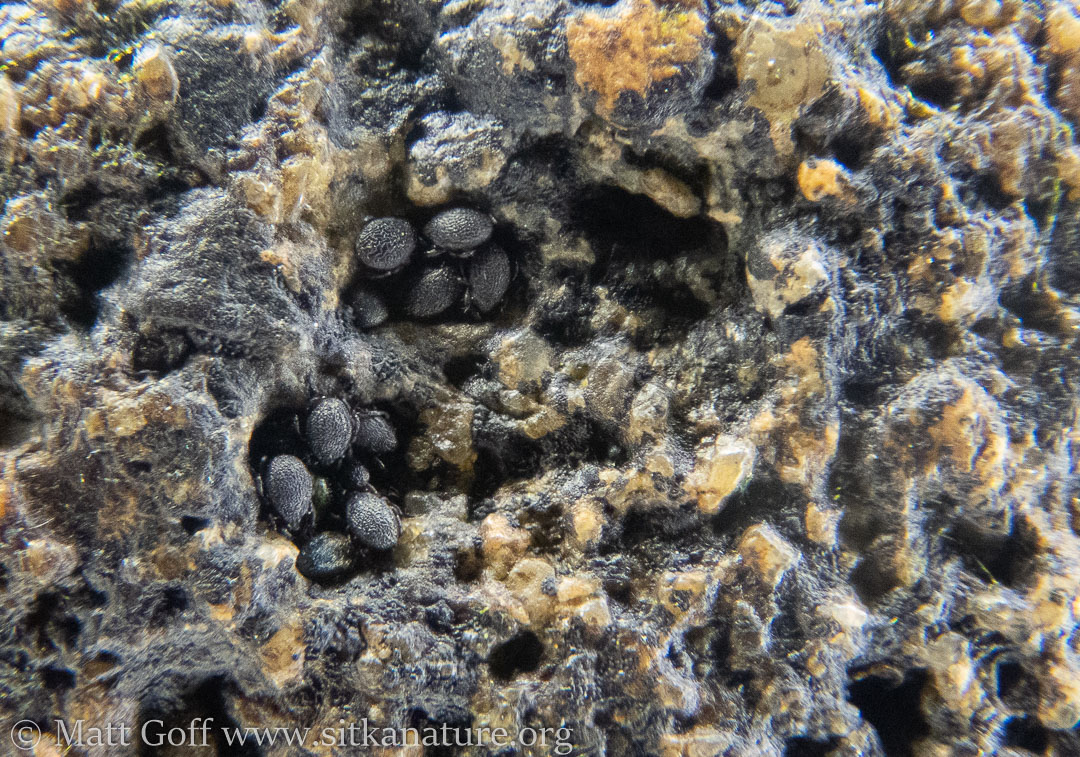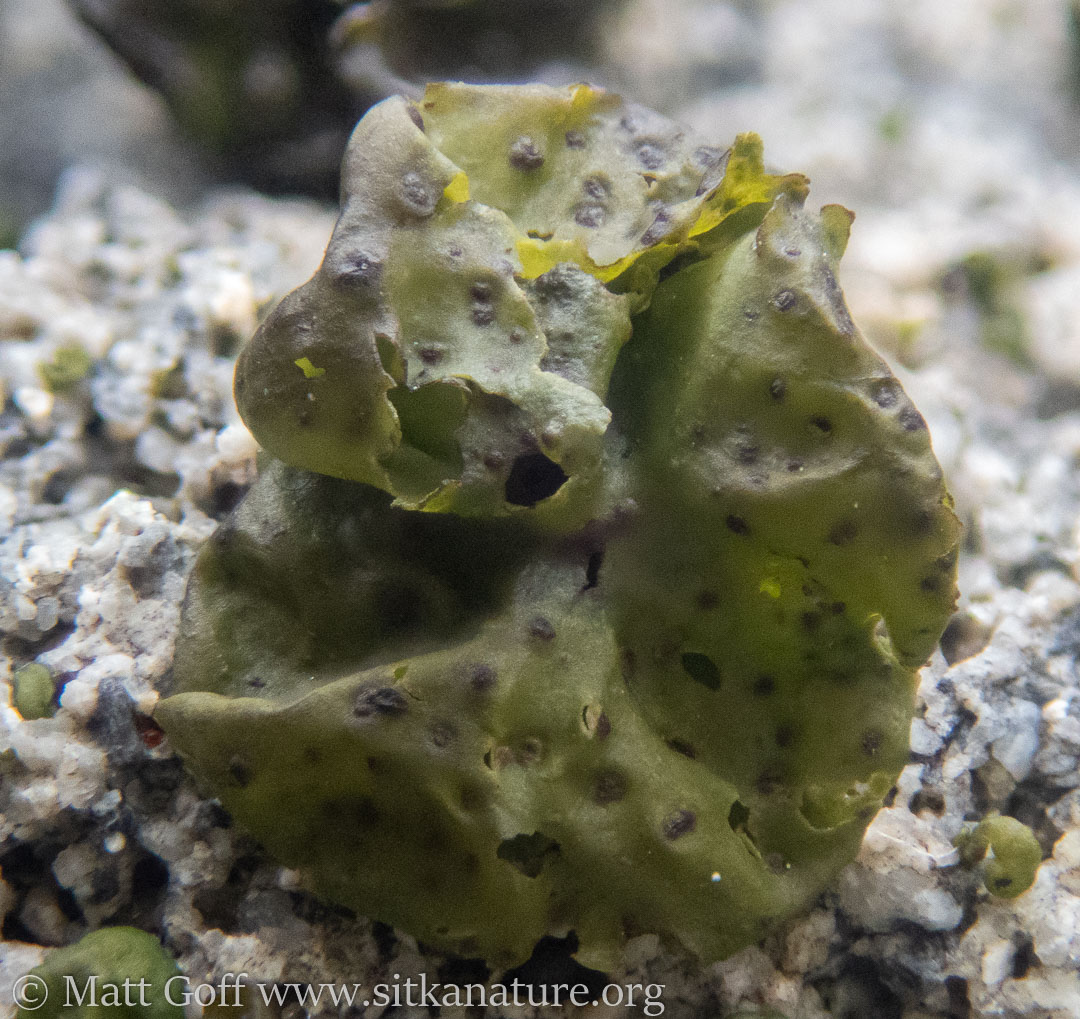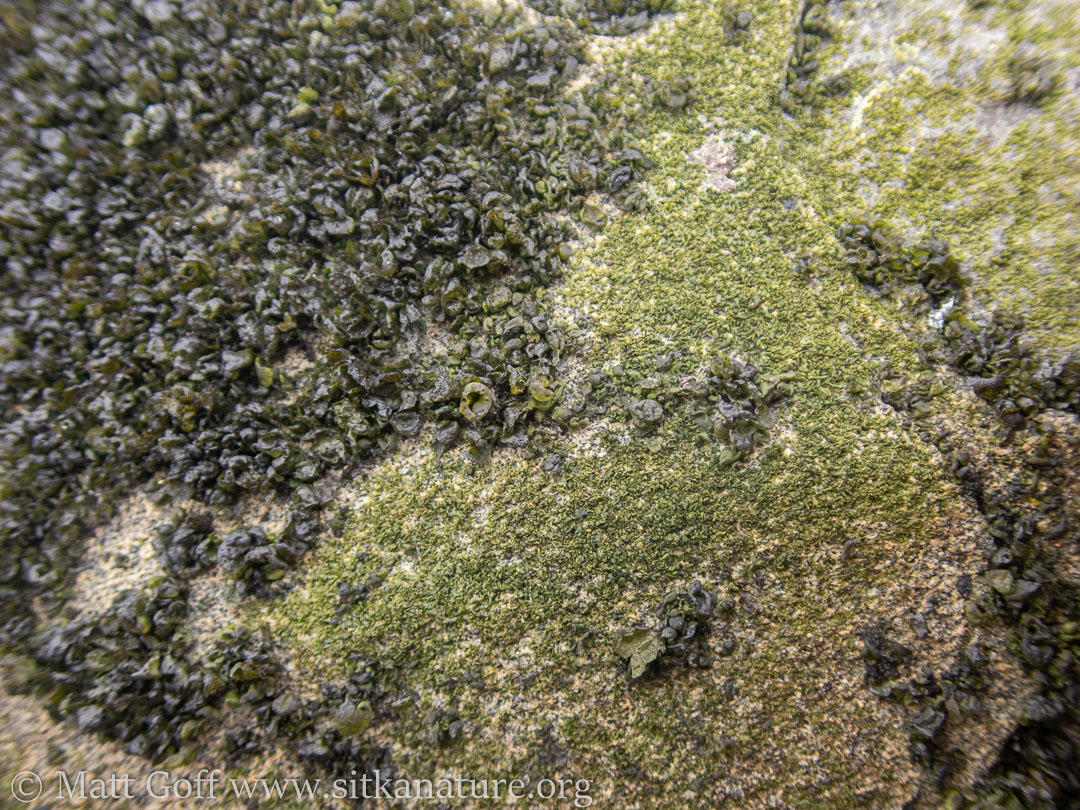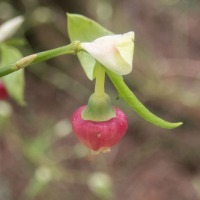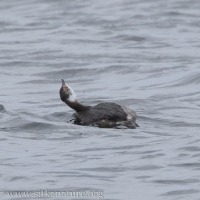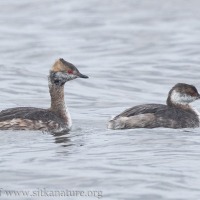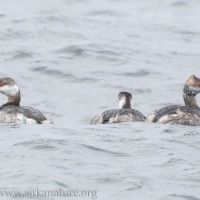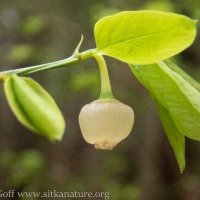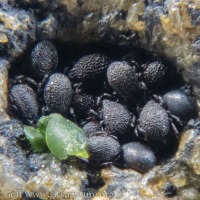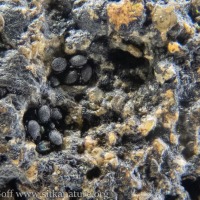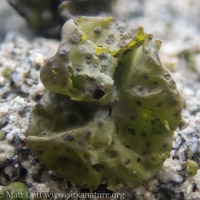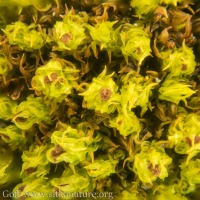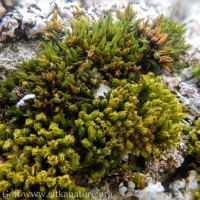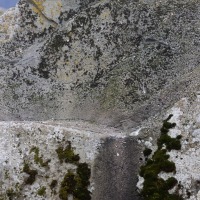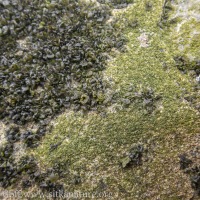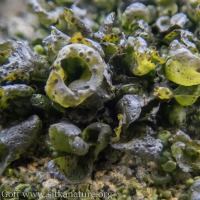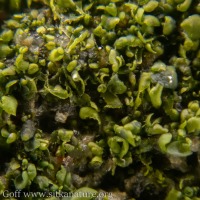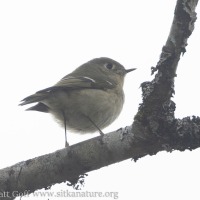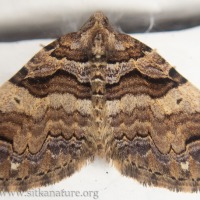Overcast for most of the day, with increasing winds and some rain late in the day.
The forecast had been for very windy with rain today, so I was a little surprised to wake up and see blue skies out my window. That didn’t last long, as by the time I got up a half an hour or so later, it was cloudy.
The updated forecast said rain was more likely this afternoon, so I decided to get out for a walk around Totem Park this morning.
Shortly after leaving, I heard a Ruby-crowned Kinglet. It’s my first of the year.
I checked the visitor center walls for moths and found three different species, all ones I’ve seen previously this year.
One of my intentions was to look for a Rock Sandpiper so I headed out to the river mouth.
It had been calm in the forest, but stepping out on the beach was a different story. A stiff breeze was blowing across from the southeast.
The tide was approaching low, so plenty of beach for shorebirds to be on. I didn’t hear any shorebirds, but figured I would walk out near the shoreline just in case.
I didn’t walk out on the spur between the river and the no longer active channel, but did scan with my binoculars. A flock of gulls was out at the end, but I didn’t spot anything that seemed unusual. Between the distance and chilly wind blowing in my face, conditions were not the best for viewing.
I continued around without seeing any shorebirds other than a couple oystercatchers (which had been out in front closer to the visitor center earlier.
A trio of Horned Grebes showed up close to shore. At first there was only one. It caught my attention because I could see it had started transitioning to summer plumage.
While I watched it kept looking up to the sky, so I looked up as well. I could see several gulls and an eagle soaring overhead. I’m guessing the grebe was just trying to make sure there weren’t going to be any predator surprise attacks from above.
I was nearly off the beach when I happened to catch sight of a flock of shorebirds flying at the river mouth. I debated with myself briefly before heading back out crossing the old channel to the finger of beach closest to the river mouth.
At the very end I found a flock of 100 or so Surfbirds and Black Turnstones, but didn’t see any Rock Sandpipers in the mix.
Before heading home, I stopped at Sage Beach to check for Prasiola borealist again. This time, I went to the specific rock where I remembered finding it before.
Before looking specifically at the Prasiola I spent a moment giving the rock a closer look.
I was a little surprised when I realized pretty much every small hole or depression in the rock was filled with tiny mites. I’ve previously observed these Ameronothrus mites, but only when I got home and found them in my photos.
I hadn’t remembered to look for them specifically since that time. They’re very easy to overlook, because they are so small.
As first I was only seeing Prasiola meridionalis like I found a couple of days ago when I was looking. When I looked up a little higher, I noticed the much darker (due to fungal infection) Prasiola borealis. It seemed to prefer being about a foot higher than the bulk of the P. meridionalis. This put it up into the lichen zone.
Once I had a clearly image of what I was looking for, I saw it growing on other nearby rocks. On one it was well up into the lichen zone. There was even some moss growing lower down than it.
I’m curious about the relationship between the two Prasiola species and the fungus (in particular, I’m wondering if perhaps there’s only one species). I made particular note of dark and pale green (maybe uninfected blades) growing together.
Processing photos from last week this evening, I finally reviewed the flock shots of the shorebirds, and it turns out there were two or three Rock Sandpipers in the mix. I thought I had seen one, but then lost sight of it. I wasn’t able to refind it, so wasn’t sure if I had been mistaken in suboptimal viewing conditions.
As a result of adding the Rock Sandpiper, I’m up to 82 species for the year, which is on pace with last year at this date. Of course there are several species I’ve already seen this year which I didn’t see until later in the year last year. Last year was exceptional numbers-wise, so while it would be nice to keep up or even surpass the totals, but I don’t really expect to.



